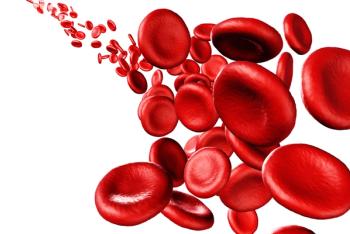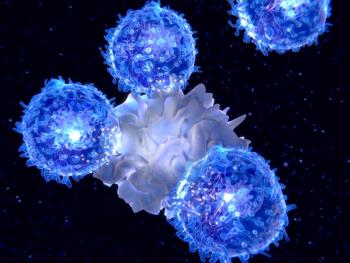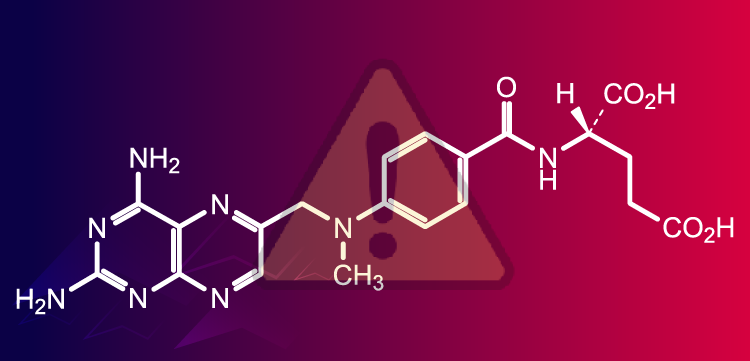
- ONCOLOGY Vol 15 No 3
- Volume 15
- Issue 3
Combination Chemo-Antibody Therapy With Fludarabine, Cyclophosphamide, and Rituximab Achieves a High Complete Remission Rate in Previously Untreated Chronic Lymphocytic Leukemia
Initial treatment of chronic lymphocytic leukemia (CLL) with fludarabine (Fludara) or fludarabine/cyclophosphamide (Cytoxan, Neosar) resulted in complete remission (CR) rates of 28% and 35%, respectively. Recently, rituximab (Rituxan)
Initial treatment of chronic lymphocytic leukemia (CLL) withfludarabine (Fludara) or fludarabine/cyclophosphamide (Cytoxan, Neosar) resultedin complete remission (CR) rates of 28% and 35%, respectively. Recently,rituximab (Rituxan) has been shown to have significant dose-related efficacy inCLL and to sensitize lymphoid cells to chemotherapy. Based on these data, 68patients with previously untreated CLL who have progressive or advanced-stagedisease (National Cancer Institute Working Group Criteria) have been entered ona fludarabine/cyclophosphamide/rituximab protocol (fludarabine at 25 mg/m2,cyclophosphamide at 250 mg/m2) daily for 3 days for six courses every 4 weeks.Rituximab is given at 375 mg/m2 on day 1 of course 1 and 500 mg/m2 on day 1 ofcourses 2 through 6.
Thirty-five patients are evaluable after six courses and 21patients are evaluable after three courses. The patients were younger than usual(median age: 58 years; range: 36 to 83 years) and 40% were Rai stage III/IV witha median white blood cell count of 111 × 103/mL. The results by course numberare as follows:
Toxicities associated with the first infusion of rituximab weremainly fever and chills or changes in blood pressure. Toxicity grade was I/II in61% and grade III/IV in 14%. Reactions to rituximab in courses 2 through 6 wereuncommon. Toxicities associated with fludarabine/cyclophosphamide were nausea in21% of courses associated with vomiting in 7%. Alopecia was noted in onepatient. Major (pneumonia 1.1%, septicemia 1.9%) and minor infections (fever ofunknown cause 4.2%, herpes infection 1.5%, soft tissue infection 4.2%) occurredin 13% of courses. Opportunistic infections were not noted. Neutropenia was themost common hematologic toxicity leading to dose reduction offludarabine/cyclophosphamide in 21% of patients. No hemolytic anemia has beennoted. Chemical (3 patients) and clinical (2 patients) tumor lysis was notedbefore allopurinol prophylaxis was initiated. One patient died of pneumoniaafter the second course.
As shown above, a high response rate is noted after threecourses. After six courses, all responders except two PRs had < 5% CD5- andCD19-coexpressing lymphocytes (median: 0.8%) in the marrow. Four of 10 CRpatients studied became polymerase chain reaction (PCR)-negative forimmunoglobulin heavy-chain rearrangement.
CONCLUSION: Fludarabine/cyclophosphamide/rituximab is the mostactive regimen explored by our group in previously untreated CLL. The toxicityprofile is similar to that seen with fludarabine/cyclophosphamide alone.
Articles in this issue
over 24 years ago
State of the Art of Non-Small-Cell Lung Cancer in the New Millenniumover 24 years ago
Novel Approaches in the Treatment of Non-Small-Cell Lung Cancerover 24 years ago
Triplet Combination Chemotherapy and Targeted Therapy Regimensover 24 years ago
Gemcitabine for the Treatment of Non-Small-Cell Lung Cancerover 24 years ago
Gemcitabine in Combination With New Platinum Compounds: An Updateover 24 years ago
Treatment of Elderly Patients With Non-Small-Cell Lung Cancerover 24 years ago
Irinotecan in Gastrointestinal MalignanciesNewsletter
Stay up to date on recent advances in the multidisciplinary approach to cancer.

















































































